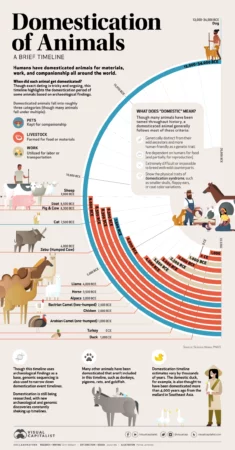- Forthcoming special issue of Plants, People, Planet on forgotten crops. Get your paper in about how they’re under-represented in genebanks.
- Or about how they need to be DNA fingerprinted, like the USDA is doing for coffee.
- I wonder if there is a forgotten crops version of the Three Sisters. Answers on a postcard, please.
- Forget about genebanks, grow those forgotten crops in your garden. Rebelliously.
- Forget about forgotten crops, how about forgotten mushrooms?
- Lest we forget the Ukrainian genebank.
- No way to forget the Future Seeds genebank.
- Australians are not being allowed to forget about genebanks, plant and animal. With video goodness. There’s hope yet.
- Meanwhile, in China…
Brainfood: AnGR in the US, Cloning, Reindeer diversity, Lactose persistence evolution, Fish menus, Vanilla agroforestry, Pollinators in India & the US, Dogs & people
- Development and utilization of the United States gene bank collection. Of animals, that is: 1.15 million samples from 59,640 animals, representing 44 species of livestock, aquatic and insect genetic resources, 191 breeds and 369 subpopulations.
- Healthy cloned offspring derived from freeze-dried somatic cells. Another way to conserve in genebanks like the above, at least for mice.
- Genetic differentiation between coexisting wild and domestic Reindeer (Rangifer tarandus L. 1758) in Northern Eurasia. Now there’s better information to help decide how to conserve both in genebanks and outside, at least for reindeer.
- Dairying, diseases and the evolution of lactase persistence in Europe. Being able to digest milk didn’t help Neolithic people much. But not being able to digest milk during famines or plagues was really bad for them. Yeah but now we’re stuck with all that livestock.
- Signature of climate-induced changes in seafood species served in restaurants. Since 1880, the mean temperature preference of fish on Vancouver’s menus has increased by 3°C. Soon some will need genebanks, I guess. Or domestication.
- Win-win opportunities combining high yields with high multi-taxa biodiversity in tropical agroforestry. You don’t necessarily have to pay for higher vanilla yields with lower biodiversity. Good, because you can’t put everything in a genebank, I guess.
- Functional diversity of farmland bees across rural–urban landscapes in a tropical megacity. Oh look, another win-win!
- A review of management actions on insect pollinators on public lands in the United States. As in tropical megacities, removing invasives is an unalloyed good.
- Human Ecology: Special Issue on Dogs. Whether you’re a dog person or not, it’s hard to argue that any domesticated animal has engaged in a more diverse set of interactions with humans. Truly a win-win. But please, let’s not clone Fido.
Nibbles: CGIAR impacts, Innovative varieties, Sweet potato in PNG, Mexican food viz, Mango diversity, Lactase persistence, Tree planting, Indigenous sea gardens
- Average returns on agricultural R&D investment is 100%, says CGIAR.
- I wonder how many from this list of the most innovative plant varieties of 2020 can trace back to some CGIAR product. Or genebank.
- Which sweet potato varieties do consumers actually like in PNG?
- Cool visualizations of the relationships between Mexican crops and foods.
- One village, 100 mangoes. Visualize that.
- Don’t blame high food prices on war. Entirely, anyway.
- Lactase persistence is not due to the benefits of drinking milk. Entirely, anyway.
- A whole bunch of tools to help select trees to plant in Europe. The entirely correct URL for the climate matching tool is this one though.
- Why worry about any of that when you can have sea gardens, though?
Animal domestication through the ages
 Pretty good infographic on the history of animal domestication from the oddly named Visual Capitalist. References and a map would be good, but we mustn’t…ahem…look a gift horse in the mouth.
Pretty good infographic on the history of animal domestication from the oddly named Visual Capitalist. References and a map would be good, but we mustn’t…ahem…look a gift horse in the mouth.
Nibbles: Algal genebank, Baking, Distilling, Ft Collins genebank, Community genebanks, Trinidad genebank, Agriculture & climate change, Nigerian coconuts, Organic agriculture
- Saving an algal germplasm collection in the US.
- Saving ancient grains via baking in Israel and distilling in Minnesota.
- Saving seeds (and more) in a famous genebank in Ft Collins, Colorado.
- Saving seeds in community genebanks in Nepal.
- Saving seeds for the community in Trinidad & Tobago.
- Saving agriculture from climate change in Hainan. Someone tell India.
- Saving the Nigerian coconut sector.
- Saving organic agriculture from politicians.